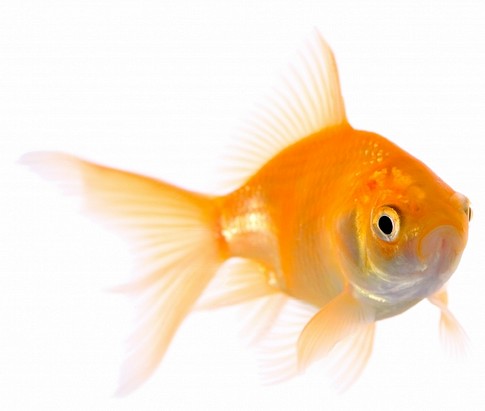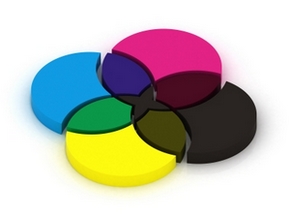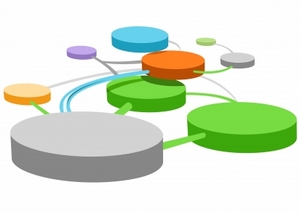 Photo credit: Ljupco Smokovski
Ken Thompson writes:
Photo credit: Ljupco Smokovski
Ken Thompson writes: "In most economies, smaller enterprises are much greater in number than large firms and these small fish are also responsible for driving innovation and competition. But how do these two distinctly different entities --the Big Fish and the small fish-- come together to create business innovation and to swarm around new business opportunities? Porter's strategy suggests that to take SMEs (i.e. small fish) to the next level, their leaders have to find some way to move beyond their current customer bases and begin to work with the bigger, more demanding, Big Fish enterprises. The strategy, which stacks up pretty well in practice, concludes that if the SMEs are good enough, then these Big Fish will make them even better by stretching them through ongoing strategic innovation partnerships."But is this really feasible? Read on to find out.
Globalise Your Business, Go VEN! Become a Virtual Networked Enterprise
A unique symbiotic relationship between small firms, big firms and regional economies by Ken Thompson Imagine you have a magical Electron microscope which lets you see anything you like not in the physical world but in the economic world.
You crank the magnification right up to maximum so you can see the very smallest atoms of economic activity. What do you find? You find me - the owner/manager of an ambitious knowledge-based small business.
Text me a question "What is your biggest strategic challenge?" It takes a minute because I really have to think about it and get my head out of the tyranny of operational urgencies and into the strategic space I so rarely inhabit. Eventually your cell phone beeps with my response
Imagine you have a magical Electron microscope which lets you see anything you like not in the physical world but in the economic world.
You crank the magnification right up to maximum so you can see the very smallest atoms of economic activity. What do you find? You find me - the owner/manager of an ambitious knowledge-based small business.
Text me a question "What is your biggest strategic challenge?" It takes a minute because I really have to think about it and get my head out of the tyranny of operational urgencies and into the strategic space I so rarely inhabit. Eventually your cell phone beeps with my response "According to the A-list strategy gurus such as Harvard’s Michael Porter my biggest challenge is gaining access to major enterprise customers who will stretch and improve me and my product or service. And you know what Porter is absolutely right".I am a small fish - there are a lot of others just like me. For example, in the EU, small and medium-sized enterprises (SMEs or small fish) comprise approximately 99% of all firms and employ among them about 65 million people. Now jump from the bottom of the economy way up to the top of the major supply chains. You meet me - the CEO of a Fortune 100 global enterprise. I am a Big Fish. Ping me the same question on my secure corporate Instant Messenger "What is your biggest strategic challenge?" This time the response comes back instantly
"That’s easy – its keeping my products and services ahead of the competition and avoiding the "Silver Bullet with a my name written on it" of unexpected competitive knock-out from left field that Andy Grove, author of "Only the Paranoid Survive", warns about".Now fine tune the microscopes "multi-dimensional resolution" to move away from the micro to the macro. What do you see? You meet me – an Economic Development director in a major regional economy. I am a Fish Farmer – I try to create ecosystems where fish (Big and small) can thrive. Ask me the same question - "What is your biggest strategic challenge?" This time you have to use email as that’s the currency of the organization I work for. Ten minutes passes, you grab a coffee and then you hear the familiar sound of a "you have email" notification and you read
"The biggest challenge for us is developing our regional economy by joining the dots between the small indigenous local companies and global enterprises. The era of a big player locating here and bringing 10,000 jobs has gone – we must find a way to create these jobs through our local companies competing and winning in the global market with global customers".The amazing three-way "Win-Win-Win" Opportunity is this: the small fish, Big Fish and Fish Farmers all want the same thing – they just don’t know how to make it happen! Sounds paradoxical? Not really. When you consider that innovation is the key to success in the 21st century, and that huge corporations like Procter and Gamble and IBM are going to the ends of the earth seeking innovation, the picture comes into focus. The term "Open Innovation" is now the most popular phrase in the corporate business vocabulary. Here's what's going on. In most economies, smaller enterprises are much greater in number than large firms and these small fish are also responsible for driving innovation and competition. But how do these two distinctly different entities --the Big Fish and the small fish-- come together to create business innovation and to swarm around new business opportunities? Porter's strategy suggests that to take SMEs (i.e. small fish) to the next level, their leaders have to find some way to move beyond their current customer bases and begin to work with the bigger, more demanding, Big Fish enterprises. The strategy, which stacks up pretty well in practice, concludes that if the SMEs are good enough, then these Big Fish will make them even better by stretching them through ongoing strategic innovation partnerships. If, however, an SME is not good enough, it will quickly find out, which is painful, but yields valuable information for both parties. So either way it is a "win-win" situation if a small fish can somehow engage a Big Fish to test the waters for mutual benefit. It's summed up by the legendary economist Joseph Schumpeter's notion of "Creative Destruction", a process in which the old ways of doing things are endogenously destroyed and replaced by new ways.
Good News and Bad News
 But wait. There is the bad news for SMEs trying to follow this connect-and-collaborate partnership strategy because Big Fish are almost impossible to reach directly by an individual SME for many reasons:
But wait. There is the bad news for SMEs trying to follow this connect-and-collaborate partnership strategy because Big Fish are almost impossible to reach directly by an individual SME for many reasons: - Big Fish worry about small fish longevity and stability.
- There are cultural chasms between Big Fish and small fish.
- Small fish are too much trouble to deal with -- far too disruptive.
- Small fish don't understand or fit Big Fish structures and processes.
- Small fish find it hard to participate in extended information sharing sessions with Big Fish that often last 12-18 months before any revenues are realized.
- Accessibility issues are commonplace as Big Fish are not generally headquartered in a given small fish's region.
- Local Big Fish operations may have limited autonomy for strategic sourcing and forming new alliances
What is a Virtual Enterprise Network (VEN)
 The goal of a Virtual Enterprise Network (VEN) is to connect Small and Medium Enterprises (SMEs) into peer networks, supported by appropriate collaboration practices and technologies, to give them the capabilities and competitive advantages of large global enterprises, particularly in:
The goal of a Virtual Enterprise Network (VEN) is to connect Small and Medium Enterprises (SMEs) into peer networks, supported by appropriate collaboration practices and technologies, to give them the capabilities and competitive advantages of large global enterprises, particularly in:- Sales
- Marketing Reach
- Product Development
- Human Capital and IT Capital
- Speed and Responsiveness
- Entrepreneurship and Innovation
- Flexibility
- Low Overheads
- Virtual As the opposite of Physical, new (non-physical) enterprises forming and dissolving from other (physical) enterprises, each with different processes, systems and cultures, with the need to build trust, common aims and working practices very quickly.
- Virtual As not geographically in the same place, with the use of virtual team technologies and techniques to address this.
- Virtual Capacity In the sense of "Virtual Memory," where a computer operates as if it has more capacity than it actually has, allowing enterprises to incorporate external skills and resources to exploit market opportunities.
Question: Why do we need VENs? Answer: Because most adhoc business collaborations fail There is an obvious question "Why do we need a VEN model?" Is it that difficult for businesses to collaborate, and should we not just let them get on and do it? The reason this logic is faulty is that the vast majority of ad hoc business collaborations involving more than two parties fail miserably for three main reasons:
- Unrealistic expectations. SMEs often expect results in advance of investment on their part. Experience shows it is unlikely that an SME network will win a major collaborative new customer contract in less than 12 months. Opportunistic behavior and under investment kills collaborative business networks.
- Bid Fright. When SMEs see the effort involved in preparing a major customer bid they often decide not to bid. The problem is, if they never bid they will never get any better at preparing professional and credible major bids. Experience reveals that the first two collaborative bids are rarely successful; they are really just foundations for later successful bids. But you never get to the winning bid if you don’t make the other bids first.
- Lack of scale and resources. Collaborative business networks need big players to give them scale and credibility and resources. However, it is very difficult to avoid these big players effectively taking over the network and turning into their own personal supply chains, with all the problems this entails.
Originally written by Ken Thompson for Master New Media.

